Discover the Enchantment of Brazilian Beaches
Brazil’s Beaches: Where Dreams Meet the Sea
Brazilian beaches are renowned for their vibrant culture, stunning landscapes, and world-famous coastlines, attracting visitors from all over the globe.
Imagine this
Golden sands, crystal-clear waters glistening under the sun, and a gentle breeze carrying the sound of samba
That’s Brazil’s coastline—a paradise where natural beauty, adventure, and relaxation come together in perfect harmony.
From vibrant beach towns full of life to secluded coves that feel like paradise, Brazil has something for everyone.
Love surfing? You’ll find world-class waves.
Craving peace and solitude? Discover untouched beaches where time seems to stand still.
That’s Brazil. This country is a paradise for beach lovers.
And it’s not just about the ocean—Brazil also boasts breathtaking river beaches, lush surroundings, and vibrant local cultures.
Join us on a journey through Brazil’s stunning beaches, discovering their charm and why they belong on your bucket list.
Brazil is a land of contrasts, where vibrant culture meets breathtaking landscapes.
Brazil is renowned for its stunning coastlines, offering some of the most beautiful beaches in the world.
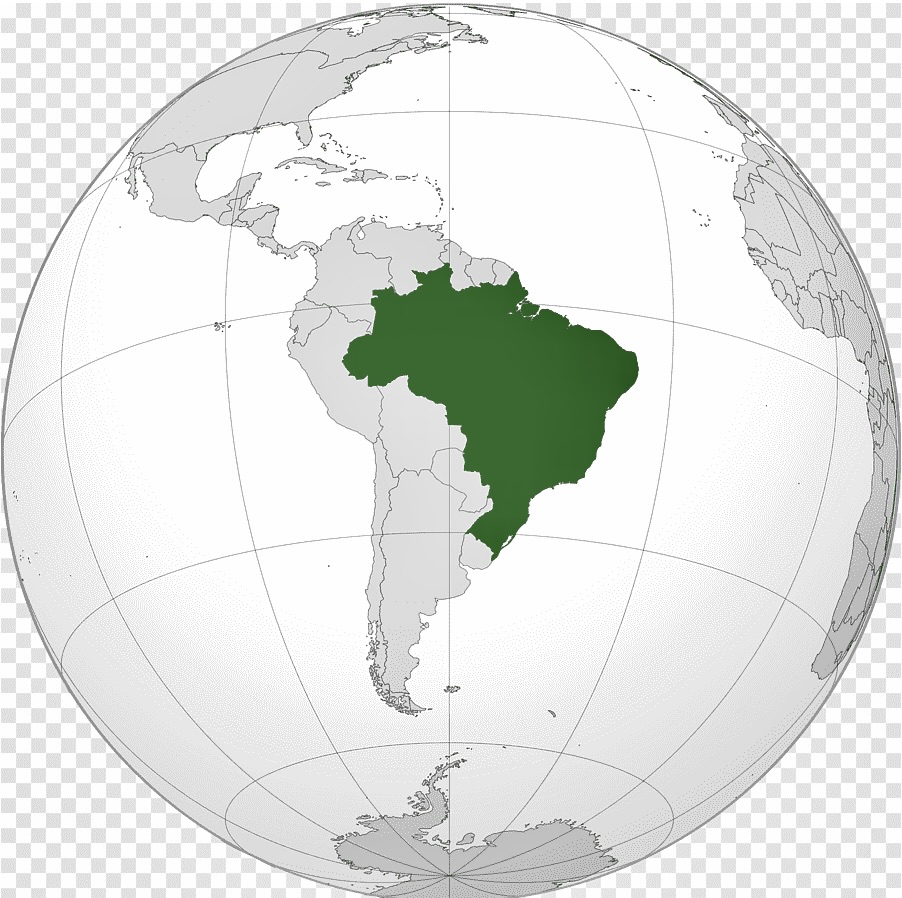
Brazil’s (almost 7,000 kilometers / 4,350 miles) Atlantic coastline boasts world-famous beaches, making it the longest continuous stretch along the Atlantic Ocean.
From the Northeast’s sunny shores to the South’s picturesque beaches and stunning river beaches, Brazil offers unmatched variety.
Whether you’re seeking the buzz of lively city shores or the tranquility of untouched paradises, Brazil has it all.
Beyond the ocean, you’ll find hidden river beaches, lush tropical surroundings, and the warm hospitality that makes every visit unforgettable.
Explore Brazil’s diverse coastline, where each region unveils a unique blend of natural beauty, cultural richness, and thrilling adventures.
Let’s dive into the best beaches in Brazil, exploring them region by region.
North Region: Brazilian Beaches Where Rivers Embrace the Sand
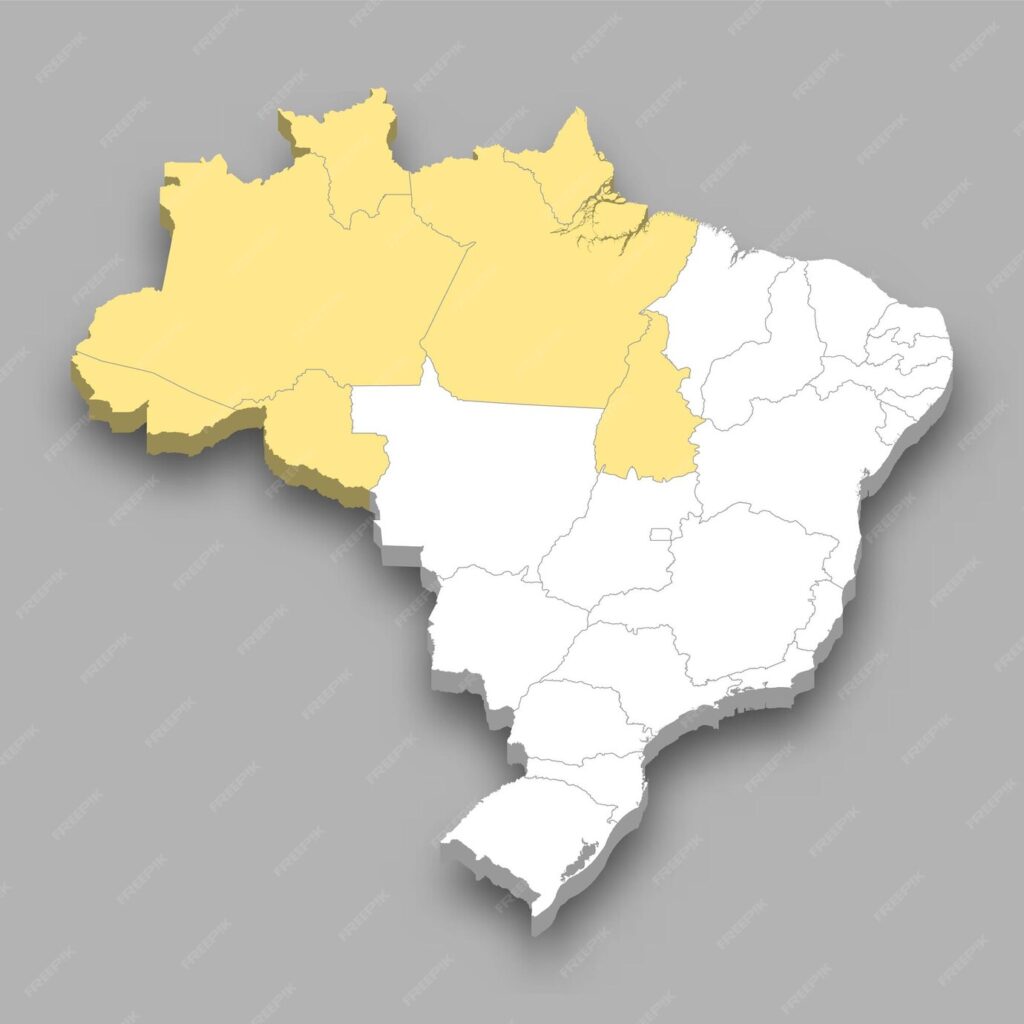
The North region of Brazil is a treasure waiting to be discovered by beach lovers.
Its oceanic coastline stretches 1,400 kilometers (800 miles), but much of its charm lies in the Amazon’s vast river network.
Thousands of kilometers of Amazon rivers create stunning river beaches, offering breathtaking landscapes and unique natural beauty.
These freshwater paradises, surrounded by lush greenery, offer a one-of-a-kind experience that’s as diverse as the region itself.
Some of the Brazilian Beaches You’ll Fall in Love With
Alter do Chão: The Amazonian Caribbean That Captivates the World
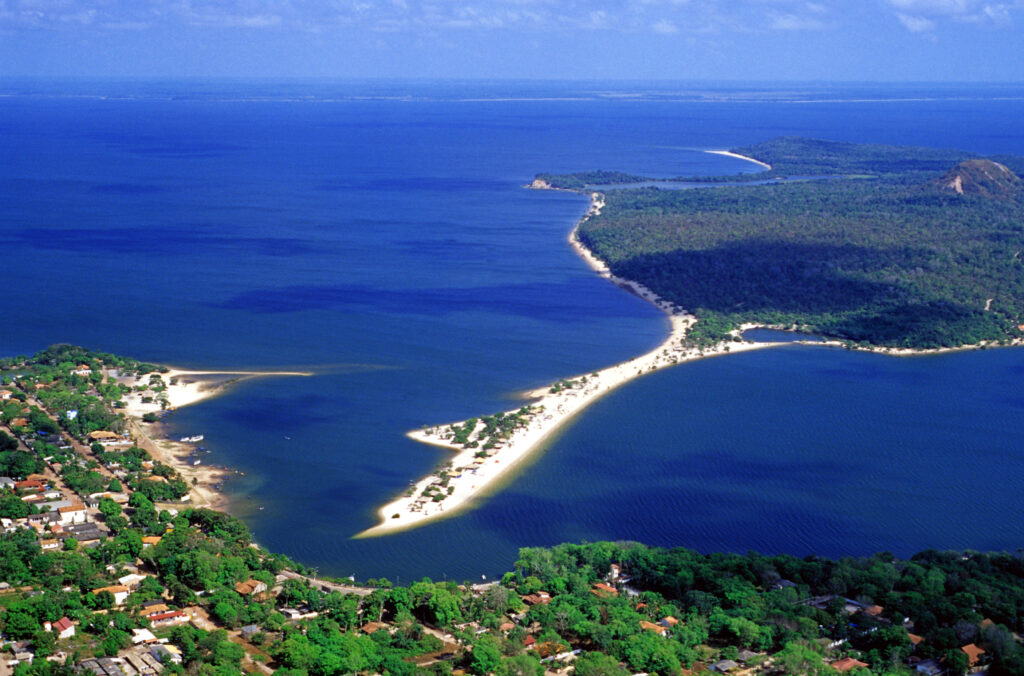
Alter do Chão, a small village in Pará, was named by The Guardian as one of Brazil’s most beautiful beach destinations
Known as the “Caribbean of the Amazon,” Alter do Chão offers white sands, crystal-clear waters, and the Amazon’s lush greenery.
The Ilha do Amor and the Seasons of Flood and Drought
One of Alter do Chão’s most iconic attractions is the famous Ilha do Amor (Island of Love), a sandbank that emerges during the dry season, transforming into a paradise surrounded by the Tapajós River.
During the rainy season, the landscape shifts, revealing magical igapós – submerged forests that create stunning natural mirrors, perfect for boat rides or kayaking.
Regardless of the season, Alter do Chão offers a spectacular natural setting.
From August to December, the dry season highlights the breathtaking freshwater beaches, while from January to June, the flooded forests and aquatic trails take center stage.
Freshwater Beaches: A Relaxation Paradise
Alter do Chão is home to beaches that cater to all preferences, from lively and bustling spots to tranquil, secluded areas only accessible by boat.
Some of the most popular beaches include:
- Praia do Pindobal: A peaceful retreat for relaxation.
- Ponta do Cururu: Perfect for watching the sunset.
- Ponta de Pedras: A quiet haven for those seeking serenity.
- Praia do Maguari and Ponta do Caxambu: Idyllic locations for nature enthusiasts.
These beaches feature warm waters and fine sand, creating the ideal environment for unwinding and soaking in the natural beauty.
Unique Culture and Cuisine
The cuisine of Alter do Chão is a highlight in itself.
Pará’s culinary traditions are rich in unique flavors, featuring dishes such as tacacá, maniçoba, and delicious freshwater fish like pirarucu and tambaqui.
Amazonian fruits, including cupuaçu, taperebá, and bacuri, play a starring role, whether in juices, desserts, or refreshing ice creams.
In the village center, food stalls and restaurants offer these local delicacies at affordable prices, allowing visitors to sample a variety of flavors while enjoying the lively yet laid-back atmosphere of the village.
Must-Do Activities in Alter do Chão
Beyond its stunning beaches and delicious food, Alter do Chão offers a variety of activities:
- Boat tours: Explore the Tapajós and Arapiuns rivers and visit nearby riverside communities.
- Kayaking through the igapós: Experience the enchanting flooded forests up close.
- Hiking in the Tapajós National Forest: A perfect activity for adventure and ecotourism enthusiasts.
- Watching the sunset at Ponta do Cururu: A breathtaking spectacle of colors.
How to Get to Alter do Chão
Located 34 km from Santarém Airport (STM) and about 1,350 km (839 miles) from Belém, Alter do Chão is easily accessible by flying into Santarém and taking a short car or taxi ride.
The village offers the tranquility of an off-the-beaten-path destination combined with convenient accessibility.
Why Visit Alter do Chão?
Alter do Chão is not just a destination – it’s an experience that blends the beauty of freshwater beaches with the grandeur of the Amazon.
It’s the perfect place for those seeking tranquility, adventure, and a deep connection with nature.
Discover why this gem in Pará is considered one of Brazil’s most precious treasures.
Praia do Atalaia: A Tropical Paradise in Pará

Imagine warm waters, freshwater lagoons, and fine sand that shifts with the tide—a perfect beach experience.
Welcome to Praia do Atalaia in Salinópolis, Pará, one of the best beach destinations in the state.
Located approximately 200 km 124 miles) from Belém, this tropical haven draws visitors year-round.
The Charm of Atalaia Beach
Salinópolis, or “Salinas,” is a lively hub during the dry season, with tourists from the capital flocking to its beaches.
Praia do Atalaia is the star attraction of the region, offering unique experiences depending on the tides:
- High Tide: The beach narrows, creating ideal waves for surfing. Visitors can relax at nearby beachside restaurants while enjoying the ocean breeze.
- Low Tide: Natural pools form among the white dunes, especially on the eastern side of the beach, creating a magical setting for families and adventurers alike.
Year-Round Warmth and Seasonal Variations
The weather in Salinópolis is warm and inviting throughout the year, with seawater temperatures that make swimming delightful. However, rainfall varies significantly:
- January to May: This is the rainy season, with monthly rainfalls often exceeding 300mm.
- August to November: The dry season, ideal for beach visits, with almost no rain.
- June, July, and December: Transitional months, offering a mix of sun and occasional rain.
To avoid crowds, visit Praia do Atalaia outside peak periods like July, late December, and January, when it’s busiest.
Adventure and Events
Atalaia Beach isn’t just for relaxation; it’s also a hub for adventure tourism.
The beach’s white dunes, lush vegetation, and sandy trails provide the perfect backdrop for off-road rallies and adventure sports.
A Recognized Cultural and Environmental Treasure
Praia do Atalaia has recently been designated as a cultural, material, immaterial, scenic, and environmental heritage site of the State of Pará.
Why Visit Praia do Atalaia?
Praia do Atalaia offers a mix of natural beauty, adventure, and culture.
Surf during high tide, relax in natural pools at low tide, or explore dunes—this beach promises a memorable experience.
Avoid the peak crowds, and you’ll discover a serene tropical escape perfect for unwinding.
Praia do Tupé: A Hidden Gem of Manaus
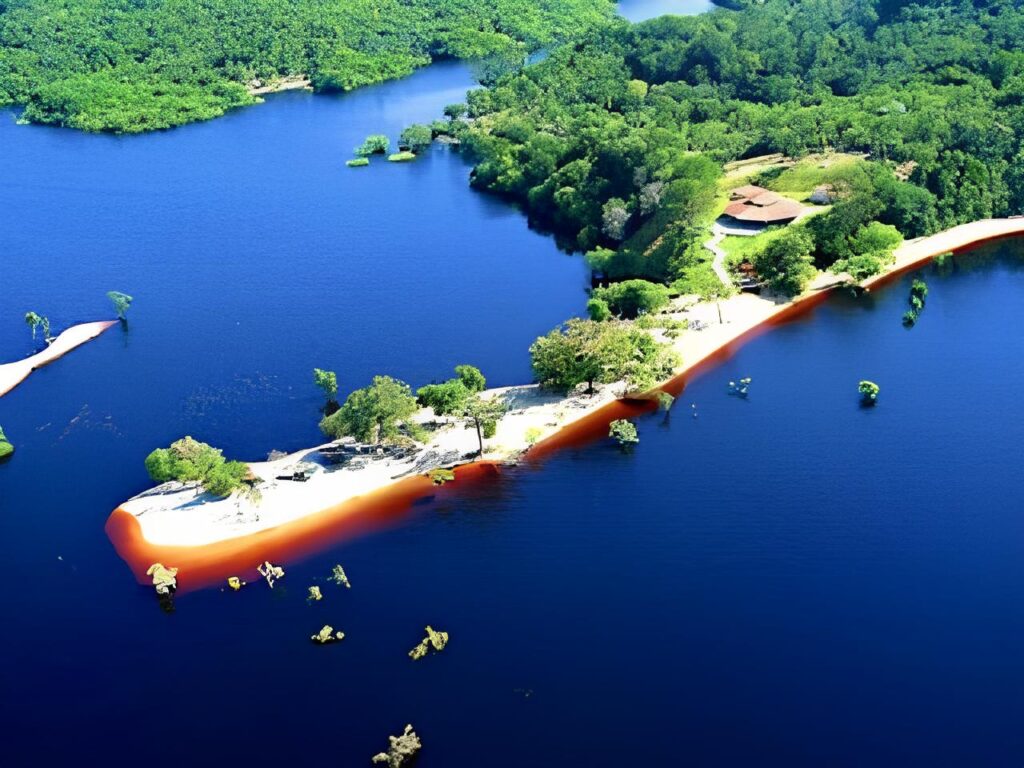
Praia do Tupé, in the Tupé Sustainable Development Reserve, is a popular beach in Manaus, especially on weekends and holidays.
Located in the São João community, it’s known for its white sands and the striking contrast with the dark Rio Negro waters..
Getting to Praia do Tupé
Unlike some of the newer beaches accessible by car, such as those in Iranduba, Praia do Tupé is accessible only by water.
Visitors can reach the beach via boat, making the journey an adventure in itself.
The Tupé Sustainable Development Reserve (RDS)
Praia do Tupé is part of the Tupé Sustainable Development Reserve, a true paradise of Amazonian biodiversity.
Located just 25 km (15.5 miles) from Manaus, at the confluence of the Rio Negro and Tupé Lake, the reserve spans 11,973 hectares.
Managed by Manaus City Hall, it’s home to six communities, with about 5,000 residents relying on community-based tourism and farming.
These communities support environmental conservation and sustainable development through tourism and farming, contributing to the reserve’s mission.
The Beauty of Praia do Tupé: High or Low Waters?
Like many Amazonian beaches, Praia do Tupé transforms with the seasons, divided into periods of high water (cheia) and low water (vazante):
- During Low Water (Vazante), the beach offers a wide stretch of white sand, perfect for sunbathing or relaxing.
- High Water (Cheia): The Rio Negro rises, covering most of the sand, leaving only a narrow strip.
- This creates a unique setting for visitors to enjoy the warm waters and Amazonian sun.
Both periods offer unique experiences, making Praia do Tupé a versatile destination for nature lovers and adventure seekers.
A Sustainable Paradise
The beach’s white sands, scattered with isolated trees, create a unique and picturesque landscape.
Being part of a Sustainable Development Reserve, Praia do Tupé promotes the balance between environmental preservation and local economic growth.
Visitors can enjoy the natural beauty while supporting the local communities that work to protect the region.
Why Visit Praia do Tupé?
- Natural Beauty: White sands, dark waters, and the lush Amazonian vegetation create a striking and unforgettable setting.
- Community-Based Tourism: Experience authentic Amazonian culture while contributing to the local economy.
- Seasonal Transformation: Witness the changing landscape of the beach with the rising and falling waters of the Rio Negro.
- Exclusive Access: Reach Praia do Tupé by boat and immerse yourself in the tranquility of a remote yet welcoming environment.
Whether during high or low water, Praia do Tupé offers an unparalleled Amazonian experience, just a short trip from Manaus.
Why the North Region is Unforgettable
The North region is unlike anywhere else in Brazil!
- The beauty lies in how it blends serene freshwater beaches with the vibrant life of the Amazon rainforest.
- The North’s coastline spans 1,400 kilometers, featuring mangroves, estuaries, and sandy beaches along the Atlantic Ocean.
- The Amazon Basin has thousands of kilometers of rivers and hundreds of river beaches, a paradise for nature lovers.
Travel Tips for the North Region
Best Time to Visit
The ideal time to explore the beaches of the North is during the dry season, which typically runs from July to December.
During this period, river levels recede, revealing stunning sandbanks and creating the perfect conditions for relaxing on the beaches.
Wet Season (January to June):
While the rain enhances the lushness of the rainforest, some beaches may be submerged, and travel could be more challenging due to high water levels.
However, it’s still a magical time for those who love exploring the Amazon’s waterways.
What to Pack
- Light Clothing:
- The North is warm and humid, so breathable fabrics like cotton are your best friend.
- Sun Protection:
- Don’t forget sunscreen, sunglasses, and a wide-brimmed hat to shield yourself from the tropical sun.
- Bug Repellent:
- Essential for evenings, especially near riverbanks and forests.
- Reusable Water Bottle:
- Stay hydrated while exploring, and help reduce plastic waste.
Local Tips
- Try the Local Cuisine:
- Don’t miss the chance to taste Amazonian delicacies like tacacá, maniçoba, and açaí in its purest form.
- Respect Nature:
- The Amazon region is ecologically sensitive. Always follow eco-tourism guidelines and avoid leaving any waste behind.
- Hire Local Guides:
- For the best experience, consider hiring knowledgeable local guides who can show you hidden gems and share stories about the region.
A Journey into the Heart of Nature
The North region of Brazil offers more than just beaches—it’s a gateway to a world where rivers become tranquil oases, and the rainforest envelops you in its magic.
With an oceanic coastline of 1,400 kilometers (870 miles), thousands of kilometers of rivers, and hundreds of river beaches, the North invites you to experience the Amazon’s wonders in a way you’ll never forget.
“Come discover the hidden gems of the Amazon, where rivers meet the sand and nature takes your breath away.”
Northeast Region: Brazilian Beaches, Brazil’s Coastal Jewel
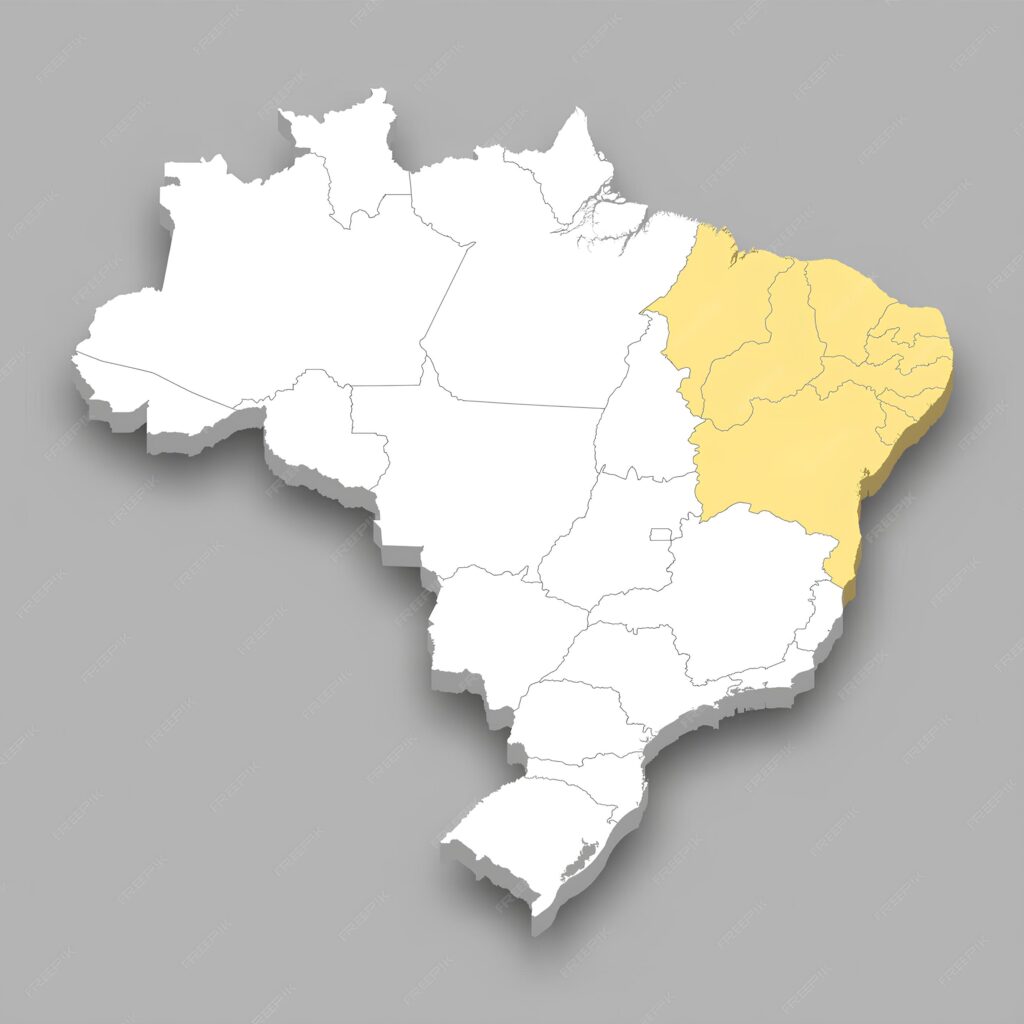
Stretching over 3,300 kilometers (2,050 miles), the Northeast of Brazil is a true coastal treasure, with beaches ranging from vibrant urban areas to peaceful and secluded coves.
Known for its golden sands, turquoise waters, and vibrant beach culture, this region offers some of the most iconic beaches in the country.
From lively beach towns to serene getaways, the Northeast is where you’ll experience Brazil’s beach spirit at its best.
Why You’ll Love the Brazilian Beaches of the Northeast
The Northeast is famous for its stunning coastline, which is the longest in Brazil.
With a mix of bustling coastal cities, remote paradises, and crystal-clear waters, this region is perfect for those looking to experience the best of Brazil’s beach culture.
Whether you’re drawn to the lively energy of Porto de Galinhas, the natural beauty of Jericoacoara, or the peaceful atmosphere of Praia do Espelho, the Northeast offers something for every type of beach lover.
Praia do Espelho: A Dream Destination in Bahia, Brazil

Praia do Espelho, or “Mirror Beach,” is a dream destination for those seeking a serene escape by the sea in Bahia, Brazil.
Often ranked among the best beaches in the country and even listed as one of the most beautiful in the world, this paradise is no longer just a day trip spot—it has become a fantastic holiday destination.
If the nearby villages of Trancoso and Caraíva feel too bustling for your taste, Praia do Espelho might just be the perfect retreat for a holiday weekend.
This hidden gem offers everything you need for a relaxing getaway: charming guesthouses, delicious restaurants, cozy beach bars, crystal-clear waters, colorful cliffs, and natural pools.
The scene is completed with deserted stretches of sandy beaches lined with coconut palms, framing the idyllic landscape.
Haven’t been to Praia do Espelho yet? Let us guide you! This stunning beach could easily fit into your travel dreams.
Where Is Praia do Espelho?
Praia do Espelho is one of the best-kept secrets of Bahia’s southern coastline, located in the Porto Seguro municipality.
To be more precise, it sits roughly halfway between the famous villages of Trancoso and Caraíva.
Also known as Curuípe, this tranquil spot can best be described as a discreet seaside village—a place where time seems to slow down, and nature takes center stage.
Highlights: A peaceful atmosphere, stunning natural beauty, and the chance to relax away from the crowds in a true slice of paradise.
Porto de Galinhas: A Tropical Paradise in Pernambuco, Brazil
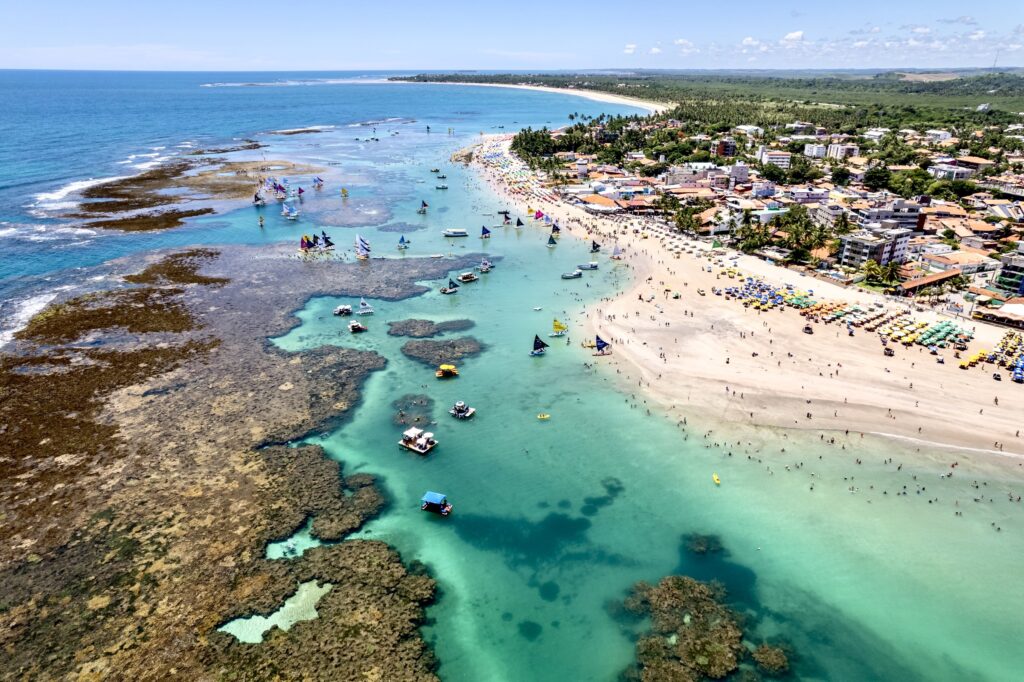
Famous for its natural pools filled with colorful fish, this beach is a haven for families and snorkelers alike.
Porto de Galinhas is a stunning beach located in the district of the same name, within the municipality of Ipojuca, Pernambuco, Brazil.
Famous for its crystal-clear, warm natural pools formed by coral reefs, the region also boasts estuaries, mangroves, white sand, and coconut palm groves.
This tropical paradise has been a favorite destination for tourists and surfers from around the world. Impressively, it has been voted the “Best Beach in Brazil” ten times in a row by the renowned Viagem e Turismo magazine.
Nearby Attractions
Between Porto de Galinhas and Praia dos Carneiros—another must-visit destination in Pernambuco—you’ll find the charming Santo Aleixo Island.
To the north, there’s the beach of Muro Alto, renowned for its long coral reef barrier, and Calhetas Beach, a historic spot where Spanish navigator Vicente Yáñez Pinzón landed in January 1500.
Calhetas is also popular for zip-lining and other adventure activities.
When to Visit
Porto de Galinhas enjoys sunny days year-round, but the rainy season typically spans April to July, with June seeing the heaviest rainfall.
The best time to visit is between September and February, with October, November, and December offering the sunniest days.
Whether you’re seeking relaxation, adventure, or history, Porto de Galinhas is a destination that combines natural beauty with unforgettable experiences.
Highlights: Snorkeling in the crystal-clear waters, raft tours through the reefs, and exploring the charming local shops and eateries.
Jericoacoara (Ceará): A Gem Among the World’s Best Beaches
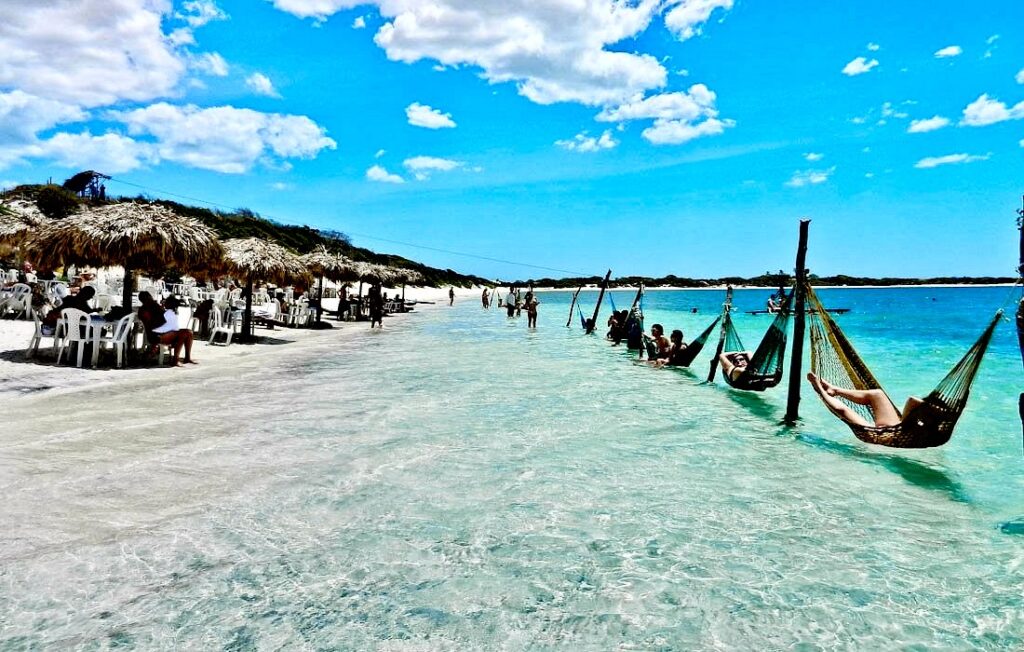
Tucked away in the northeastern state of Ceará, Jericoacoara—or simply “Jeri,” as it’s fondly called—is a breathtaking Brazilian paradise recognized worldwide as one of the best beaches on the planet.
Known for its golden sand dunes, turquoise lagoons, and the iconic Sunset Dune (Duna do Pôr do Sol), Jeri offers an unforgettable blend of natural beauty and tranquil charm.
This car-free village has received global acclaim, with publications like Condé Nast Traveler and The Washington Post praising its unique allure.
In 1994, The Washington Post ranked it among the ten most beautiful beaches in the world, and in 2014, HuffPost placed it fourth on its list of the best beaches on Earth.
A Paradise for Adventurers
Jericoacoara is a haven for windsurfing enthusiasts, with steady winds and perfect conditions attracting athletes from around the globe.
Beyond water sports, visitors can explore the serene lagoons, wander through the dunes, or simply soak in the laid-back atmosphere of this picturesque village.
Where Is Jericoacoara?
Jericoacoara is part of the Jericoacoara National Park, located in the municipality of Jijoca de Jericoacoara, Ceará, about 295 kilometers (183 miles) west of Fortaleza, the state capital.
Its remote location adds to its charm, making it a destination that feels like a true escape from the ordinary.
Whether you’re chasing adventure or seeking relaxation, Jericoacoara is a must-visit destination that perfectly showcases Brazil’s natural wonders.
Highlights: Windsurfing, kitesurfing, and the unforgettable sunset views from the famous Duna do Pôr do Sol. It’s the perfect place for adventure seekers and those looking to relax in a stunning setting.
Why the Northeast is Unmissable
The Northeast is a region of contrasts.
From the bustling beaches of Salvador and Fortaleza to the remote, untouched sands of Jericoacoara and Praia do Espelho, there’s something magical about each beach.
Whether you’re seeking the vibrant atmosphere of popular destinations or the serene beauty of hidden gems, the Northeast offers it all.
Praia de Pipa, with its dramatic cliffs and lively nightlife, and the stunning Fernando de Noronha, an iconic oceanic island known for its pristine beaches and rich marine life, are just a few examples of the region’s diverse offerings.
The region’s unique culture, rich in African and indigenous influences, adds to the experience, making it not just a beach destination, but a cultural journey.
- Coastline Length: Over 3,300 kilometers (2,050 miles), the longest coastline in Brazil.
- Unique Feature: Famous for its golden sands, turquoise waters, and vibrant beach culture, the Northeast is the heart of Brazil’s beach life.
Travel Tips for the Northeast Region
Best Time to Visit
The best time to visit the Northeast is during the dry season, which runs from August to December. This is when the weather is perfect for beach activities, with clear skies and warm temperatures.
- Rainy Season (January to July):
- While the rainy season brings lush landscapes, it’s not ideal for beach lovers, as some areas can be affected by showers. However, it’s a great time for those interested in exploring the region’s waterfalls and other inland attractions.
How to Get There
- Jericoacoara:
- The nearest airport is in Fortaleza (FOR), from where you can take a 4-5 hour drive or a small plane directly to Jericoacoara.
- Porto de Galinhas:
- The nearest airport is in Recife (REC), and from there it’s about a 1.5-hour drive to this stunning beach.
- Praia do Espelho: T
- he closest airport is in Porto Seguro (BPS), with a 2-hour drive to the beach.
What to Pack
- Light, breathable clothing for the warm weather, and swimwear for the beach.
- Sun protection like sunscreen, sunglasses, and a hat to shield you from the tropical sun.
- Insect repellent is a must, especially if you’re visiting more secluded areas near nature reserves or mangroves.
- A camera or smartphone to capture the postcard-worthy views!
Local Tips
- Taste the Local Cuisine:
- Don’t miss out on traditional dishes like moqueca (a fish stew), acarajé (fried ball of dough with shrimp), and coconut water straight from the source.
- Embrace the Culture: T
- he Northeast is known for its lively festivals, music, and dance. If you visit during Carnival or Festa Junina, you’ll experience the heart of Brazilian culture.
- Respect Nature:
- Many beaches in the Northeast are part of protected areas. Be sure to respect local guidelines to preserve the beauty of the region.
The Ultimate Beach Escape
With its 3,300 kilometers (2,050 miles) of coastline, the Northeast of Brazil is an unmissable destination for beach lovers. Whether you’re seeking adventure, relaxation, or cultural immersion, this region offers the perfect blend of all three.
“Feel the rhythm of Brazil’s sunniest coastline, where every beach is a postcard-worthy escape.”
Southeast Region: Brazilian Beaches, Vibrant Cities, and Stunning Islands

With Approximately 1,200 kilometers (745 miles) of coastline, the Southeast of Brazil offers a perfect blend of urban energy and natural beauty, with a mix of urban beaches and serene tropical islands.
From the lively beaches of Rio de Janeiro to the tranquil islands of São Paulo and the charming coast of Espírito Santo, this region is a paradise for beach lovers, offering a variety of experiences.
Whether you’re looking for the excitement of city beaches, the serenity of secluded islands, or the natural beauty of Espírito Santo’s coast, the Southeast has something for everyone.
Why You’ll Love the Brazilian Beaches of the Southeast
The Southeast is home to Brazil’s most iconic city beaches, such as Copacabana and Ipanema, as well as hidden gems like Ilha Grande, the tranquil Praia de Castelhanos in Ilhabela, and the serene Praia do Morro in Espírito Santo.
These lesser-known beaches offer a peaceful retreat, perfect for those seeking natural beauty away from the crowds.
This region is where Brazil’s vibrant urban culture meets stunning natural landscapes.
You can soak up the sun in bustling coastal cities, or escape to peaceful islands and pristine beaches, all within a few hours of each other.
Must-Visit Beaches:
Praia do Perigoso: A Hidden Gem in Rio de Janeiro
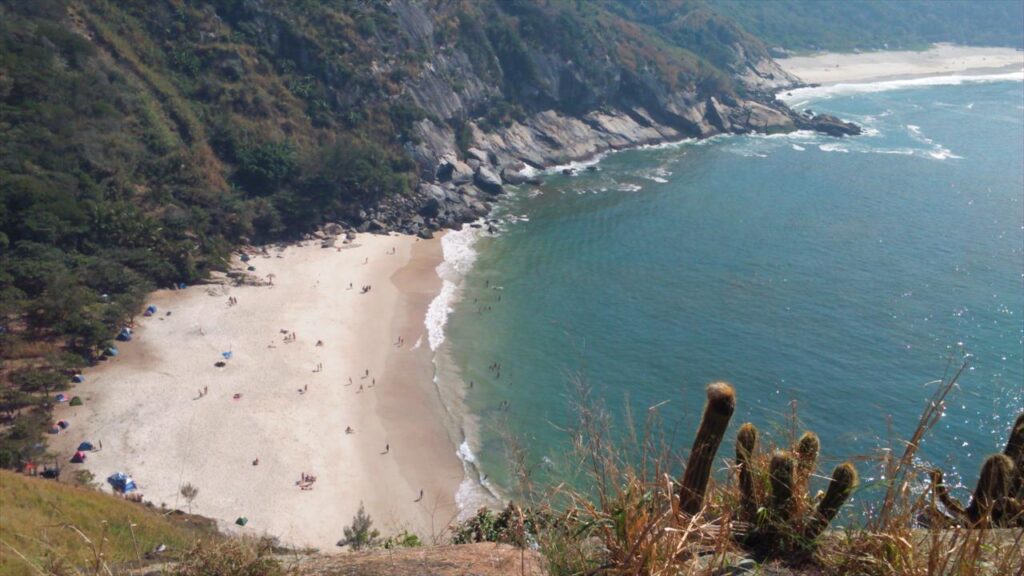
🌴For those seeking a lesser-known, off-the-beaten-path destination in Rio de Janeiro, Praia do Perigoso is a fantastic choice.
Located in Barra de Guaratiba, this pristine beach offers tranquility and a deep connection with nature, far removed from the busy crowds of the city’s famous beaches like Copacabana or Ipanema.
A Wild and Untouched Paradise
What gives Praia do Perigoso its “wild” reputation is the complete absence of human development in the surrounding area.
No roads lead to this secluded paradise, making it accessible only by hiking through the lush Atlantic Forest or by boat.
The trail begins at Praia da Barra de Guaratiba and offers two main routes:
- Caminho da Bica, which provides scenic views of Ponta do Picão.
- Via Pedra do Telégrafo, where you can enjoy the famous rock for photos.
Most visitors opt for the first route, which is well-marked and takes about an hour, depending on your pace.
Along the way, you’ll pass through stunning landscapes, and when you spot the iconic Turtle Rock (Pedra da Tartaruga), you’ll know you’re almost there.
What to Expect
Upon arrival, you’ll be rewarded with white sands, crystal-clear waters, and a serene atmosphere perfect for relaxation.
The surrounding rock formations are ideal for exploring or simply taking in the breathtaking views.
If you’re searching for an untouched side of Rio de Janeiro, where nature takes center stage, Praia do Perigoso is an experience you won’t want to miss.
Três Praias: A Hidden Gem in Guarapari, Brazil
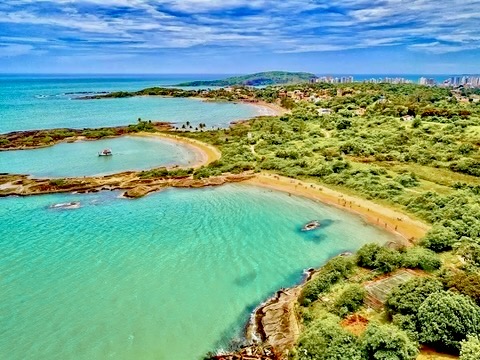
A true hidden paradise, Três Praias is a sparkling jewel on the coastline of Guarapari, Espírito Santo.
With its emerald-green waters and soft, fine sands, this enchanting cove is the perfect escape for families, snorkelers, and nature lovers seeking peace and beauty.
Discover the Magic of Três Praias
Accessible only through Praia dos Adventistas, Três Praias is a secluded sanctuary where tranquility and stunning landscapes converge.
The area consists of three small beaches, separated by rocky formations, each offering its own charm and breathtaking scenery.
Whether you want to relax by the shore, explore the unique rock formations, or dive into the crystal-clear waters, Três Praias is a destination that feels like your own private slice of paradise.
A Must-Visit Spot in Guarapari
If you’ve ever heard about the “Three Beaches” during your time in Guarapari, you’ll know they are among the most beautiful and lesser-known spots in this iconic tourist city.
Perfect for families and easy to access, Três Praias is the ultimate hidden gem waiting to be discovered on your next holiday.
Maresias Beach: A Coastal Paradise in São Paulo, Brazil
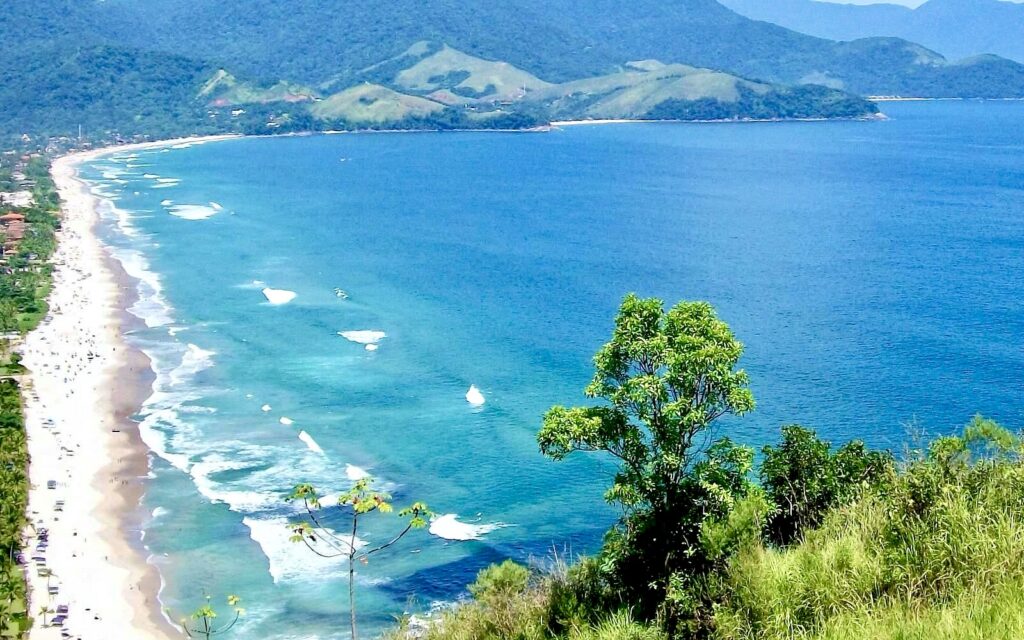
Welcome to the stunning Maresias Beach, a tropical paradise on the São Paulo coast!
Known for its breathtaking natural beauty, this beach offers a 5-kilometer stretch of fine, white sand that enchants visitors of all ages.
Whether you’re seeking relaxation, adventure, or vibrant nightlife, Maresias has something for everyone.
A Jewel of São Sebastião
Contrary to popular belief, Maresias is not a town itself but one of more than 30 beaches in the municipality of São Sebastião, located along the northern coast of São Paulo.
Despite this, it has become one of the most famous and sought-after destinations in the region, often referred to as the crown jewel of São Sebastião’s coastline.
Surfing and Crystal-Clear Waters
Maresias is a dream for surfers, boasting some of the best waves in Brazil when the swell is right.
In fact, it has hosted numerous national and international surfing competitions, solidifying its reputation as a top surf destination.
If surfing isn’t your thing, the crystal-clear waters are perfect for a refreshing swim or simply splashing around with friends and family.
Space to Unwind and Play
The expansive shoreline of Maresias provides ample space for beachgoers to relax under the sun, play beach volleyball or soccer, or enjoy a peaceful stroll along the shore.
The surrounding lush Atlantic Forest adds to the beach’s charm, creating a striking contrast between the green mountains and the turquoise sea.
Vibrant Nightlife and Local Charm
Maresias is not just about natural beauty; it’s also famous for its lively nightlife.
The beach is home to some of the best bars, clubs, and restaurants in the region, making it a hotspot for those looking to enjoy live music, delicious food, and cocktails after a day in the sun.
Don’t miss trying local specialties, including fresh seafood dishes that capture the flavors of the Brazilian coast.
Getting to Maresias
Maresias is located about 170 kilometers (105 miles) from São Paulo City, making it a convenient getaway for both locals and international visitors.
The drive along the scenic SP-55 highway offers stunning coastal views, setting the tone for your beach escape.
Why Visit Maresias?
Maresias Beach is a destination that perfectly balances natural beauty, adventure, and vibrant culture.
Whether you’re looking to surf world-class waves, explore the lush surroundings, or simply relax by the sea, Maresias promises an unforgettable experience on Brazil’s beautiful coastline.
Highlights: Surfing the waves, enjoying beach bars, and experiencing the energetic nightlife make Maresias a must-visit for those seeking excitement.
Why the Southeast is Unmissable
The Southeast region is home to some of Brazil’s most iconic cities, including Rio de Janeiro, São Paulo, and Vitória, all of which offer a dynamic mix of culture, history, and, of course, beautiful beaches.
Whether you’re enjoying the urban energy of Rio’s beaches or escaping to the tranquil islands of Ilha Grande, the Southeast is a place where vibrant city life and serene tropical shores meet.
- Coastline Length: Approximately 2,000 kilometers (1,240 miles), offering a diverse mix of urban beaches and peaceful islands.
- Unique Feature: A perfect combination of lively city beaches and hidden tropical paradises.
Travel Tips for the Southeast Region
Best Time to Visit
The Southeast is blessed with warm weather year-round, but the best time to visit is during the dry season, which runs from May to October.
This period offers the best beach weather, with clear skies and pleasant temperatures.
- Rainy Season (November to April):
- While it’s still possible to enjoy the beaches, the rainy season brings occasional showers, especially in the coastal mountains and islands. It’s a great time for those looking to explore Rio’s cultural attractions or enjoy the vibrant atmosphere of the cities.
What to Pack
- Light clothing and swimwear for beach days, and comfortable shoes for exploring the islands or hiking in the lush forests.
- Sun protection such as sunscreen, sunglasses, and a hat to shield yourself from the tropical sun.
- Insect repellent, especially if you plan to visit the more remote beaches or islands.
- A camera or smartphone to capture the breathtaking views and unforgettable moments.
Local Tips
- Try the Local Cuisine: Don’t miss out on Rio’s famous feijoada, fresh seafood, and caipirinha, Brazil’s national cocktail.
- Explore the Culture: Rio’s Sambadrome and Sugarloaf Mountain are iconic cultural landmarks. São Paulo is a hub for art and gastronomy, while Ilha Grande offers a chance to reconnect with nature.
- Respect Nature: Many of the beaches in the Southeast are part of protected areas. Be mindful of local conservation efforts and help keep these natural wonders pristine.
The Best of Both Worlds
The Southeast of Brazil offers a dynamic mix of vibrant city life and serene tropical beaches.
Whether you’re soaking up the sun on Copacabana, exploring the natural beauty of Ilha Grande, or riding the waves at Maresias, the Southeast is a destination that promises something for everyone.
“Experience the perfect blend of vibrant city life and serene tropical shores in Brazil’s bustling heart.”
South Region: Brazilian Beaches, Rugged Beauty, and Charming Towns
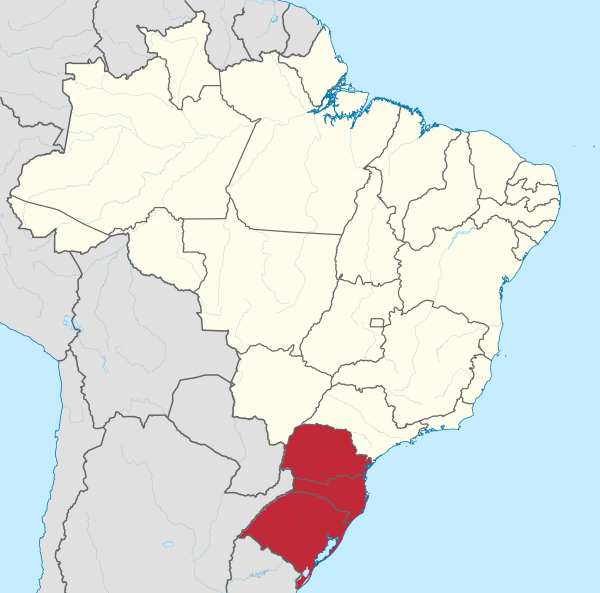
The South region of Brazil boasts about 700 kilometers (435 miles) of coastline, with dramatic cliffs, lagoons, and charming beach townsof coastline, where dramatic cliffs, serene lagoons, and picturesque beach towns create a stunning landscape.
While the waters here are cooler than in other regions, the breathtaking views and unique charm make it a must-visit destination for those seeking both adventure and relaxation.
Why You’ll Love the Brazilian Beaches of the South
The South of Brazil is home to a diverse range of beaches, from the world’s longest beach, Praia do Cassino, to the charming coastal towns of Santa Catarina and Paraná.
The region’s cooler waters offer a refreshing contrast to the tropical heat of other regions, while the surrounding natural beauty provides the perfect backdrop for outdoor activities and relaxation.
In Santa Catarina, you’ll find stunning beaches like Praia do Rosa and Praia de Bombinhas, ideal for surfing and snorkeling.
The state is also home to Florianópolis, a city known for its vibrant beach culture and picturesque landscapes.
In Paraná, the coast is equally captivating, featuring the famous Ilha do Mel (Honey Island), a tropical paradise with pristine beaches and lush forests.
The state also boasts two large bays: Baía de Paranaguá and Baía de Guaratuba, which offer calm waters perfect for boating, fishing, and exploring local wildlife.
Must-Visit Beaches
Ilha do Mel: A Serene Paradise in Southern Brazil
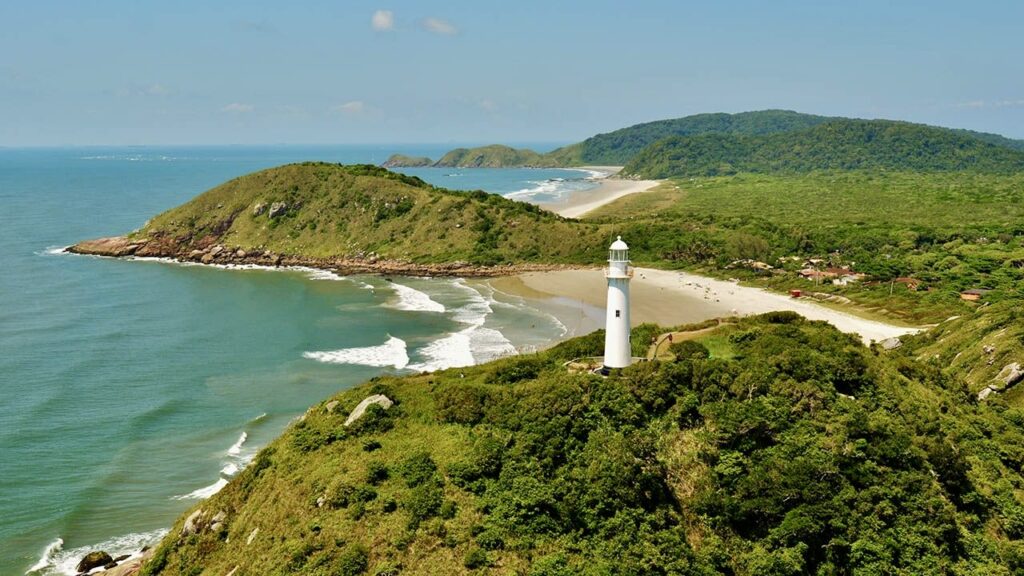
Nestled in the beautiful state of Paraná, Ilha do Mel (Honey Island) is a pristine gem and one of the most stunning destinations in southern Brazil.
Renowned for its unspoiled beaches and lush green surroundings, this tranquil escape offers a perfect retreat from the noise and chaos of urban life.
A Unique Destination
Located in the Baía de Paranaguá, about 130 kilometers (81 miles) from Curitiba, Ilha do Mel is an island like no other.
With no roads or motorized vehicles, the island is accessible only by boat, and transportation is done on foot along sandy trails.
This commitment to preservation ensures that 90% of the island remains untouched, with much of its northern portion covered in virgin forest.
With a small population of around 1,000 residents, Ilha do Mel maintains its charm as a secluded haven.
Even during peak times, the island is limited to 5,000 visitors per day, ensuring a sense of tranquility and exclusivity.
What to do on Ilha do Mel
Explore the Natural Beauty
Ilha do Mel boasts a variety of breathtaking attractions:
- Gruta das Encantadas: A mystical sea cave steeped in local legends and offering stunning views of the ocean.
- Farol das Conchas: A historic lighthouse that rewards visitors with panoramic views of the coastline after a short climb.
- Fortaleza de Nossa Senhora dos Prazeres: A 17th-century fortress with a rich history and spectacular views of the bay.
Relax on the Beaches
The island’s many beaches range from almost deserted stretches of sand to lively spots ideal for swimming or surfing. Whether you prefer solitude or adventure, Ilha do Mel’s beaches cater to every taste.
Walk the Scenic Trails
With no motor noise to disturb the peace, the island’s sandy trails offer a serene way to explore its lush vegetation.
Don’t forget to bring a flashlight if you’re planning to walk after dark, as there’s no public lighting on the island.
Tips for Your Visit
- The island is a protected area, so it’s essential to respect the natural environment. Dispose of waste properly and follow local guidelines to preserve this paradise for future visitors.
- Pack light but include essentials such as sunscreen, comfortable walking shoes, and a flashlight.
- Try the local cuisine, especially the fresh seafood, which highlights the island’s coastal charm.
Why Visit Ilha do Mel?
Ilha do Mel is a true escape into nature, offering an unparalleled mix of relaxation, adventure, and cultural history.
Whether you’re wandering through its scenic trails, marveling at its historic landmarks, or simply enjoying the calming sound of the waves, Ilha do Mel promises an unforgettable experience in one of Brazil’s most serene destinations.
Praia do Rosa: A Hidden Gem on Brazil’s Santa Catarina Coast

Located in the picturesque town of Imbituba, Praia do Rosa is a breathtaking destination that has earned international acclaim for its natural beauty and vibrant atmosphere. Known as the crown jewel of Santa Catarina’s coastline, this crescent-shaped bay is the perfect blend of pristine nature, adventure, and charm.
A Beach with Global Recognition
Praia do Rosa is no stranger to the spotlight.
Featured in the UK’s The Guardian as one of the “10 Most Beautiful Unknown Beaches in the World,”
it has become a favorite among surfers, nature enthusiasts, and travelers seeking a unique coastal experience.
Divided into two main sections, Rosa Norte and Rosa Sul, the beach caters to a wide range of preferences—from quiet retreats to lively social scenes.
A Surfer’s Paradise
With its consistent swell and powerful waves, Praia do Rosa has long been a hotspot for surfers from around the globe.
Whether you’re an experienced rider or a beginner looking to catch your first wave, the beach’s perfect breaks offer an exhilarating experience year-round.
Whale Watching and Natural Wonders
Praia do Rosa is not just about surfing; it’s also a haven for wildlife lovers.
During whale season (typically from July to November), visitors can witness the majestic Southern Right Whales as they migrate along the coast.
The beach’s surrounding hills and lush vegetation provide excellent opportunities for hiking, with trails offering stunning panoramic views of the bay.
Relaxation and Local Charm
For those seeking tranquility, Praia do Rosa delivers with its fine sand, crystal-clear waters, and peaceful ambiance.
The area is surrounded by charming accommodations, from cozy guesthouses to luxury resorts, as well as an array of restaurants serving fresh seafood and local delicacies.
A Blend of History and Modernity
Initially popularized by surfers in the 1970s, Praia do Rosa has evolved into a sophisticated destination while retaining its bohemian roots.
Today, it boasts well-developed infrastructure, including paved roads, boutique hotels, and eco-friendly resorts, making it an ideal getaway for all types of travelers.
Why Visit Praia do Rosa?
Whether you’re chasing waves, exploring scenic trails, or simply unwinding amidst breathtaking landscapes, Praia do Rosa offers something special for everyone.
Its unique combination of natural beauty, vibrant culture, and a welcoming community makes every moment unforgettable.
Cassino Beach: The Longest Beach in the World

Welcome to Praia do Cassino, a truly unique destination located in southern Brazil, in the state of Rio Grande do Sul.
Recognized by the Guinness World Records in 1994 as the longest beach in the world, this extraordinary stretch of sand spans an incredible 240 kilometers (149 miles), from the city of Rio Grande to the Uruguayan border at Chuí.
A Beach Like No Other
Cassino Beach isn’t just famous for its length—it’s also known for its unique activities and remarkable experiences.
Adventurers can explore the beach using 4×4 vehicles, buggies, motorcycles, or even on foot, traveling along the coastline all the way to Uruguay.
Attractions and Highlights
Cassino Beach offers a variety of natural and cultural attractions:
- Molhes da Barra do Rio Grande: These stone jetties extend four kilometers into the ocean, protecting the channel from sandbanks. They also provide stunning views and are a favorite spot for sightseeing and fishing.
- Altair Shipwreck: Located 21 kilometers from the jetties, this shipwreck from 1976 is a fascinating spot for visitors interested in fishing or having a picnic by the sea.
- Iemanjá Statue: A symbolic landmark of Rio Grande, this two-meter-tall statue pays homage to Iemanjá, the Afro-Brazilian sea goddess.
- Albardão Lighthouse: Built in 1909 and accessible only by 4×4 vehicles, this lighthouse is surrounded by dunes and offers panoramic views of the coastline.
- Cassino Wind Farm: Comprising 32 wind turbines, this modern complex highlights the region’s commitment to renewable energy and adds a contemporary touch to the beach’s landscape.
Activities for Everyone
From water sports like kitesurfing and surfing to tranquil swimming areas, Cassino Beach caters to all kinds of visitors.
It’s also the setting for the Extremo Sul Ultramarathon, one of the world’s longest beach races, attracting athletes from around the globe to run 226 kilometers along this stunning coastline.
Conservation and Education
Cassino Beach is not only a place for relaxation and adventure but also a hub for environmental conservation.
The Marine Animal Rehabilitation Center (CRAM) is a key facility dedicated to rescuing and rehabilitating marine animals such as penguins, seals, sea turtles, and seabirds.
Visitors can learn about marine biodiversity and the importance of preserving this unique ecosystem.
Why Visit Cassino Beach?
Whether you’re looking for adventure, relaxation, or an opportunity to connect with nature, Cassino Beach offers something for everyone.
Its unparalleled length, fascinating attractions, and commitment to conservation make it a destination unlike any other.
Why the South is a Hidden Gem
The South region is a place where nature and charm meet the sea.
With cooler waters, dramatic landscapes, and a more tranquil vibe, the South offers an authentic Brazilian beach experience that is perfect for those looking to escape the crowds and immerse themselves in natural beauty.
- Coastline Length:
- Approximately 700 kilometers (435 miles) of diverse beaches, from the world’s longest beach to small, secluded coves.
- Unique Feature:
- Rugged beauty, cooler waters, and charming beach towns.
Travel Tips for the South Region
Best Time to Visit
The South of Brazil enjoys mild weather year-round, but the best time to visit is during the summer months (December to March), when the weather is warm and perfect for beach activities.
However, if you’re looking to avoid the crowds, the fall (April to June) offers a quieter experience with pleasant temperatures.
- Winter (June to September):
- While it’s cooler, the region still offers plenty of opportunities for hiking and exploring the natural beauty of the coastline.
How to Get There
Praia do Cassino
Located in Rio Grande do Sul, the nearest airport is Salgado Filho International Airport (POA) in Porto Alegre, followed by a 2-hour drive to the beach.
Praia do Rosa
The nearest airport is Hercílio Luz International Airport (FLN) in Florianópolis, and the beach is a 2-hour drive from there.
Located in Santa Catarina, the nearest airport is Navegantes Airport (NVT), and the beach is about an hour’s drive from the airport.
Ilha do Mel
Located in Paraná, the nearest airport is Afonso Pena International Airport (CWB) in Curitiba, followed by a 2-hour drive to the port of Pontal do Sul, where you can take a ferry to the island.
What to Pack
- Light clothing and swimwear for beach days, and comfortable hiking shoes for exploring the natural surroundings.
- Sunscreen and sunglasses to protect yourself from the sun, especially if you plan to be outdoors for long periods.
- Insect repellent, especially in the more remote beach areas.
- Camera or smartphone to capture the stunning landscapes and unique moments.
Local Tips
- Try the Local Cuisine:
- The South is known for its seafood, especially fresh fish and oysters. Don’t miss out on a traditional churrasco, a Brazilian barbecue that’s a specialty of the region.
- Explore the Nature:
- The South is perfect for nature lovers, with opportunities for whale watching, hiking, and exploring lush forests and rugged cliffs.
- Respect the Environment:
- Many of the beaches in the South are part of protected areas. Be sure to follow local guidelines to help preserve the natural beauty of the region.
A Coastal Paradise
The South of Brazil offers a unique coastal experience, with cooler waters, dramatic landscapes, and charming beach towns.
Whether you’re walking along the endless sands of Praia do Cassino, surfing at Praia do Rosa, or snorkeling in the crystal-clear waters of Bombinhas, the South is a destination that promises unforgettable adventures.
“Home to the world’s longest beach, Brazil’s southern coast invites you to explore endless horizons and rugged natural beauty.”
Center-West Region: Discovering Brazilian Beaches Beyond the Ocean

The Center-West region of Brazil is landlocked, but don’t let that fool you!
While it doesn’t have ocean beaches, it offers freshwater beaches along its rivers and lakes, providing a unique twist on the traditional beach experience.
These serene locations offer a peaceful retreat amidst nature, perfect for relaxation and adventure alike.
Why You’ll Love the Brazilian Beaches of the Center-West
The Center-West is home to some of the most beautiful freshwater beaches in Brazil.
Relax by lagoons, explore riverside paradises, or enjoy water sports in lakes—this region offers a unique beach experience.
Araguaia River Beaches: Brazil’s Best Freshwater Paradise
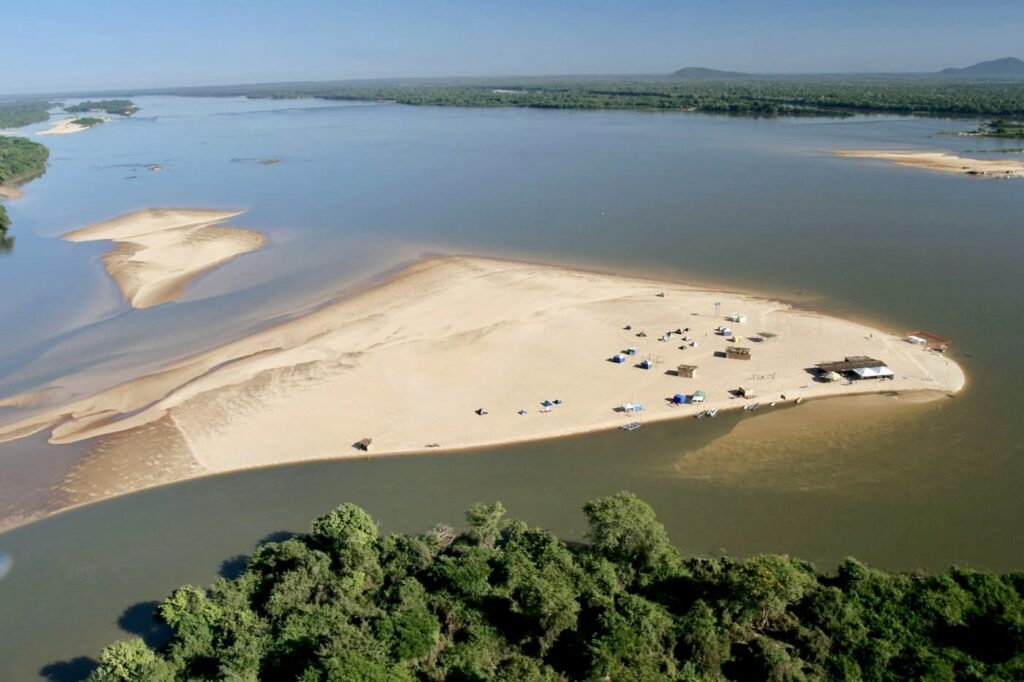
Who says you need to visit the coast to enjoy a perfect beach day?
In Brazil, there are countless freshwater beaches that rival the beauty of oceanfront destinations.
If you’re looking for a relaxing getaway with family or friends, the Araguaia River is an excellent choice!
A Hidden Gem of Freshwater Beaches
Stretching 2,627 kilometers, the Araguaia River is home to numerous pristine freshwater beaches that offer crystal-clear waters, white sand, and plenty of fun.
While Goiás may not have the ocean, it boasts beautiful river beaches that attract visitors from around the world.
These sandy paradises come to life during the dry season (June to August), becoming popular tourist destinations for beachgoers, campers, and adventure lovers.
Seasonal Beauty and Activities
The Araguaia River’s beaches are temporary wonders, emerging during the dry season and disappearing once the rains come.
The region becomes a hub for outdoor activities such as camping, swimming, and sports, offering a perfect setting to relax with loved ones.
During the rainy season, beaches disappear, giving way to boat rides and excursions to explore the lush, transformed riverbanks.
Tourism Impact and Economic Growth
These freshwater beaches not only provide an escape for tourists but also play a crucial role in boosting the local economy.
With tourism in full swing, businesses such as restaurants, hotels, and shops thrive, providing jobs and improving infrastructure in the area.
According to data from the Ministry of Tourism in 2023, the economy of the Central-West and Northern regions of Brazil has seen a significant boost due to the seasonal influx of visitors. T
he Ministry’s Annual Statistical Report reveals a 120% increase in demand for restaurants and hotels, leading to higher occupancy rates and greater business activity.
Why Visit the Araguaia River Beaches?
If you’re looking for a unique and peaceful destination away from the crowds, the freshwater beaches along the Araguaia River offer an unforgettable experience.
From the tranquil waters to the diverse activities, these beaches are perfect for anyone looking to connect with nature and enjoy a relaxing holiday.
Lago do Manso: A Hidden Gem in Central Brazil
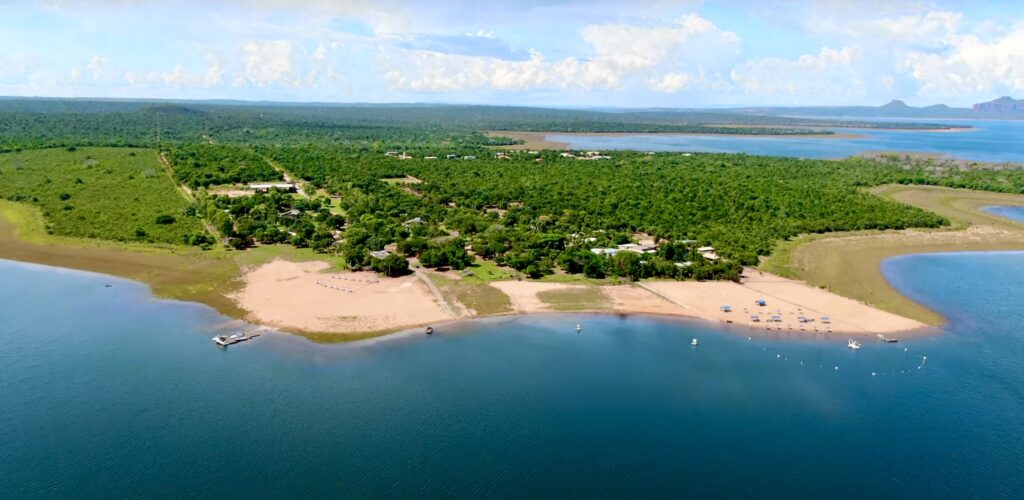
Nestled at the foot of the Chapada dos Guimarães, Lago do Manso is a breathtaking freshwater destination that’s rapidly gaining popularity.
Located about 100 kilometers from Cuiabá, in the heart of Mato Grosso, this serene lake offers crystal-clear waters, which are so transparent that the sandy bottom is visible.
A Tropical Paradise in the Heart of Brazil
Often compared to famous tropical destinations like Bora Bora and the Caribbean, the Lago do Manso has two small islands that reflect the pristine beauty of these well-known resorts.
The calm waters invite visitors to relax, swim, or explore the surrounding nature, offering an idyllic atmosphere for those seeking tranquility and adventure.
Perfect Location for Nature Lovers
The lake is strategically positioned between two of the region’s most iconic natural attractions: the sandy plains of Chapada dos Guimarães and the unique rock formations and natural pools of Bom Jardim, in Nobres.
This makes Lago do Manso an ideal stop for nature lovers and those eager to explore the natural wonders of the Brazilian countryside.
Tourism Growth and Attractions
Lago do Manso is a rising tourism hotspot in Mato Grosso, known for its stunning beauty and growing infrastructure.
The area is quickly becoming one of the most sought-after attractions in Central Brazil.
In addition to swimming, the lake offers opportunities for water sports like kayaking, stand-up paddleboarding, and boat tours.
The surrounding area, with its lush greenery and diverse wildlife, is perfect for hiking and birdwatching.
Why Visit Lago do Manso?
If you’re looking for a tranquil escape with a touch of tropical beauty, Lago do Manso is an unmissable destination.
Whether you’re relaxing on the beach, exploring the surrounding nature, or simply soaking in the peaceful atmosphere, this lake offers the perfect getaway in the heart of Brazil.
Praia da Figueira: A Hidden Lagoon Paradise in Bonito, Brazil

Bonito, Mato Grosso do Sul, is renowned for its ecotourism, attracting visitors from all over the world with its crystal-clear rivers, caves, and spectacular outdoor activities.
While it’s famous for adventures like snorkeling and diving, did you know that Bonito also has a beach?
Welcome to Praia da Figueira, a serene lagoon with all the charm of a coastal destination.
A Lagoon with the Charm of a Beach
Located just 16 kilometers from the center of Bonito, Praia da Figueira is a hidden gem that offers a unique beach experience in the heart of Brazil’s ecotourism capital.
Technically a lagoon, it features white sands, crystal-clear waters, and rustic palapas, creating a perfect atmosphere for relaxation.
The lagoon is constantly replenished by the Rio Formoso, providing the area with a refreshing current and inviting visitors to enjoy the natural beauty.
The Warmest Waters in Bonito
With water temperatures around 25°C year-round, Praia da Figueira stands out as the warmest water spot in the Bonito region.
Whether you’re swimming, relaxing by the shore, or exploring the underwater world, the calm waters offer a peaceful retreat, making it ideal for families and those seeking tranquility.
Fun Activities for All Ages
Praia da Figueira offers much more than just a place to sunbathe.
The transparent waters are teeming with fish, and you can enjoy activities like floating, kayaking, or simply lounging on the sand while soaking up the peaceful atmosphere.
It’s a perfect location for both relaxation and light adventure.
Whether you’re an avid nature enthusiast or just looking for a scenic place to unwind, this lagoon is a must-visit spot in Bonito.
Why Visit Praia da Figueira?
If you’re visiting Bonito, Praia da Figueira offers a unique blend of beach beauty and lagoon serenity—an unmissable destination.
It’s a peaceful retreat, perfect for enjoying nature’s beauty and warm waters, offering a break from intense ecotourism activities.
Why the Center-West is a Hidden Gem
The Center-West offers a unique beach experience, away from the crowds and saltwater of coastal regions.
Its freshwater beaches provide a serene atmosphere, ideal for those seeking relaxation or water activities in a picturesque natural setting.
- Coastline Length: None (landlocked region), but it offers unique lake and river beaches.
- Unique Feature: Freshwater beaches in scenic, tranquil locations.
Travel Tips for the Center-West Region
Best Time to Visit
Best time to visit the Center-West is during the dry season (May–September), with warm weather ideal for outdoor activities.
Summer months can be very hot, so stay hydrated and protect yourself from the sun during your visit.
What to Pack
- Light clothing for the warm weather, and swimwear for the freshwater beaches.
- Sunscreen and sunglasses to protect yourself from the sun.
- Water shoes for exploring the shores of lagoons and lakes.
- Camera or smartphone to capture the stunning natural beauty of the region.
Local Tips
Try the Local Cuisine:
The Center-West is known for its traditional Brazilian dishes, including pequi (a local fruit) and churrasco (Brazilian barbecue).
Explore the Nature:
In addition to the freshwater beaches, the region offers opportunities for eco-tourism, hiking, and wildlife watching.
Respect the Environment
Many of the freshwater beaches are located in protected areas, be sure to follow local guidelines to preserve the natural beauty of the region.
A Freshwater Paradise
The Center-West of Brazil offers a unique and tranquil beach experience, with its freshwater beaches and serene natural surroundings.
Kayak at Praia do Sol, enjoy Tocantins River sunsets, or try Lagoa do Manso water sports—a refreshing inland escape.
“Dive into the unexpected with Brazil’s freshwater beaches, a serene oasis in the heart of the country.”
Tips for Visiting Brazilian Beaches: Make the Most of Your Trip
To ensure you have the best experience, here are some tips for visiting Brazilian beaches:
Best Time to Visit Brazilian Beaches: When to Go for the Perfect Vacation
The best time to visit Brazilian beaches is during the dry season, which runs from December to March.
This is when the weather is warm and sunny, perfect for beach activities.
However, if you prefer fewer crowds, consider visiting in the shoulder seasons (April-May or September-November).
Pack Light and Stay Comfortable: Essential Tips for Brazilian Beach Getaways
Brazil’s beaches are all about comfort and relaxation. Therefore, make sure to pack light for a stress-free experience!
Bring a swimsuit, sunscreen, a hat, and flip-flops.
If you’re planning to explore more remote areas, it’s important to pack light, breathable clothing and comfortable shoes for walking.
For more detailed information about Brazil’s beaches and to plan your trip, visit Visit Brasil, the official tourism website.
“From golden sands to crystal-clear waters, Brazil’s beaches are waiting to be explored—dive in and let the adventure begin!”
Whether you’re seeking tranquility or excitement, Brazil’s beaches offer something for everyone. In fact, your perfect escape is just a wave away!”
Explore the rich and diverse flavors of Brazil through my books, now available on Amazon!
Whether you’re a seasoned cook or just starting your culinary journey, these books provide authentic Brazilian recipes and insights into the country’s food culture.
From the iconic feijoada to regional specialties, you’ll find everything you need to bring the taste of Brazil into your kitchen.
Check out more about my books and discover the flavors of Brazil by visiting Flavors of Brazil.


